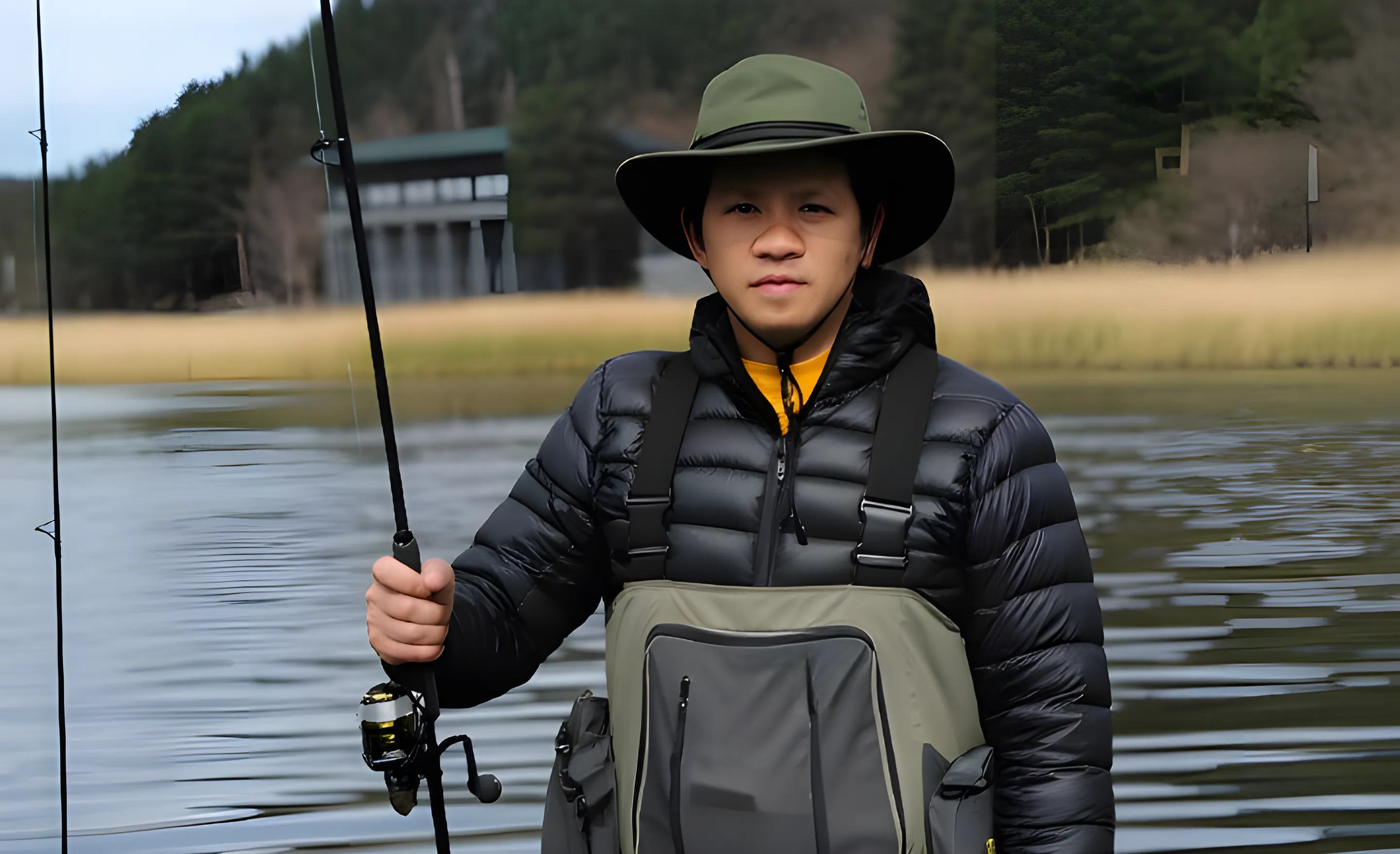The 10 Best Winter Bass Fishing Lures for 2025
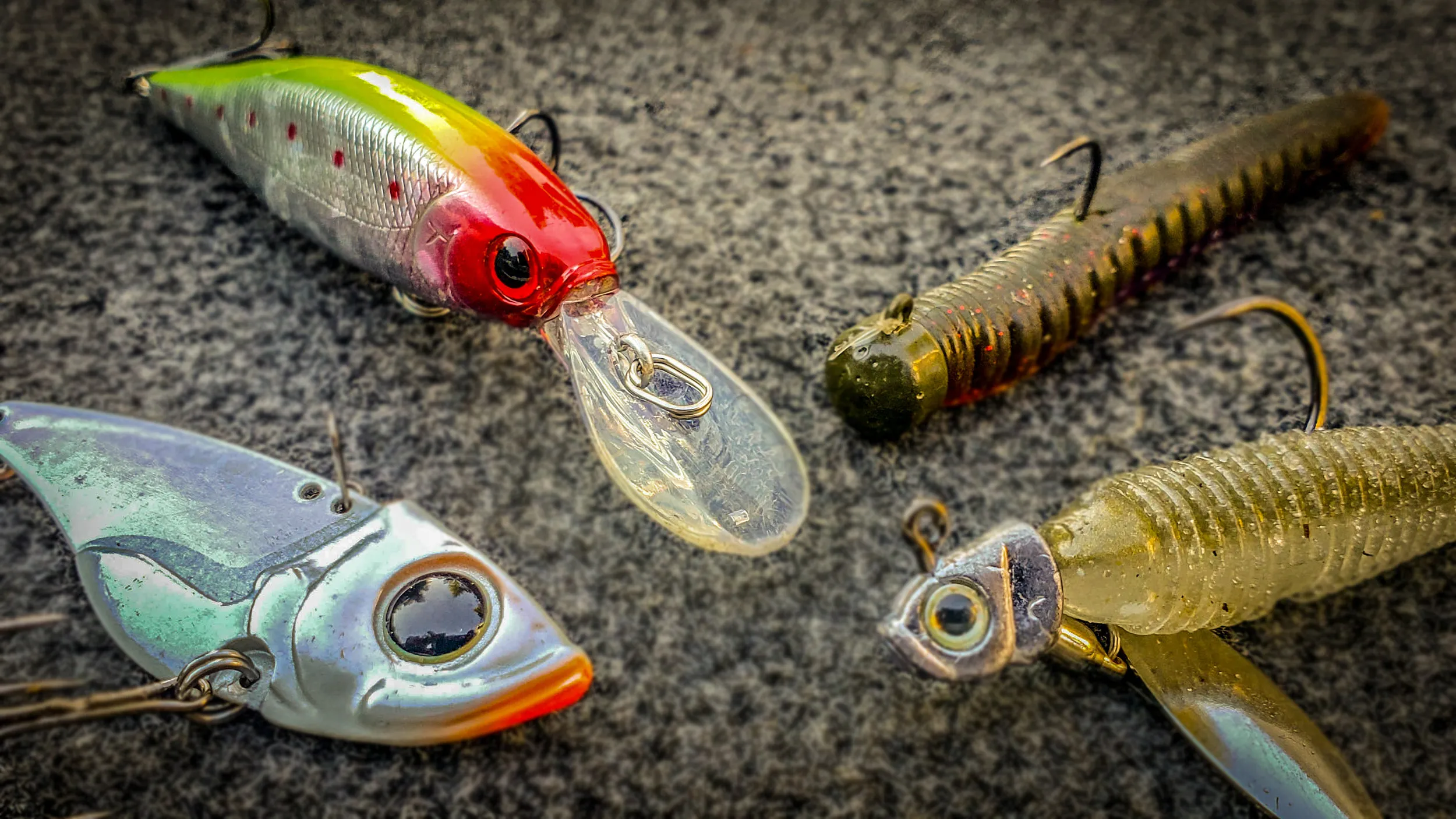
Winter presents a unique challenge for bass anglers. As the water cools, bass become lethargic, conserving energy and holding tight to deep structure. To be successful, anglers must adapt by slowing down their presentations and choosing baits that appeal to less aggressive fish. This definitive guide of riversiderelics.com to winter bass fishing lures is the result of countless hours of on-the-water testing, with each selection based on its proven ability to be fished at an ultra-slow pace, present a subtle action, and trigger strikes from otherwise inactive fish. We will break down the top 10 performers, detailing exactly why they work, how to fish them, and which models stand out from the rest.
1. Suspending Jerkbaits
The suspending jerkbait is arguably the most essential tool for targeting cold, clear-water bass. Its effectiveness comes from its unique ability to perfectly mimic the behavior of a dying or stunned baitfish—an easy meal that a lethargic winter bass cannot resist. By hanging motionless in the water column after being twitched, it gives a slow-moving bass ample time to commit and strike.
Recommended Technique: The "jerk, jerk, pause" retrieve is standard. Use sharp, downward snaps of the rod to give the lure its erratic, darting action, but the most critical part of this technique is the pause. In cold water, this pause can last anywhere from 5 to over 20 seconds. Most strikes will occur while the lure is sitting perfectly still, so it's crucial to watch your line for any subtle jumps or ticks.
Recommended Setup:
-
Rod: 6'8" to 7'2" Casting or Spinning Rod, Medium Power, Fast Action
-
Reel: 6.3:1 to 7.1:1 Gear Ratio Casting Reel or a 2500-3000 Size Spinning Reel
-
Line: 8-12 lb Fluorocarbon
Our Top Picks:
Megabass Vision 110
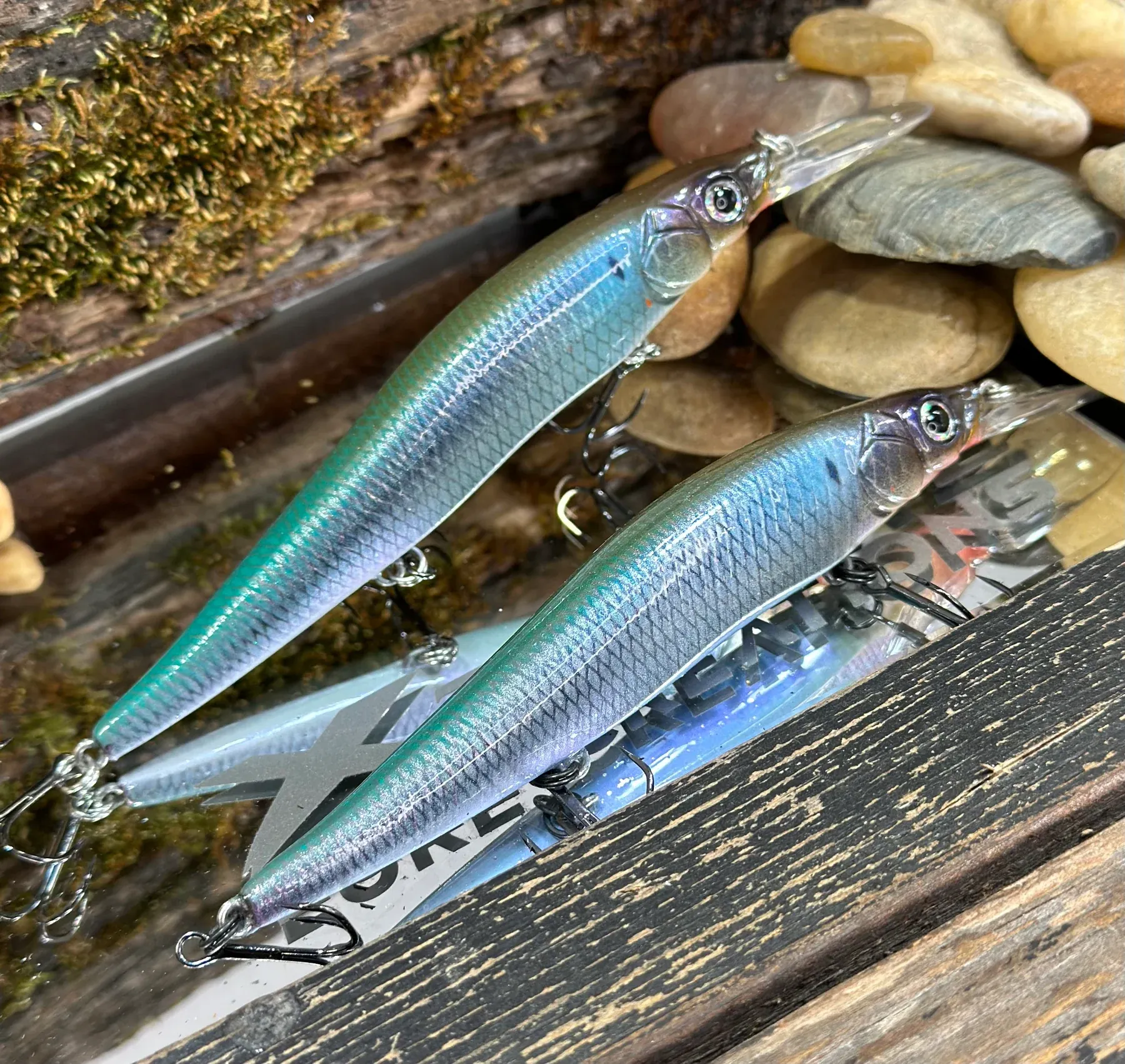
-
Pros: Unparalleled darting action; performs perfectly out of the box with a natural, head-down suspension; premium hardware and a sophisticated weight-transfer system for long casts.
-
Cons: Very high price point, making it a significant investment.
Rapala Shadow Rap
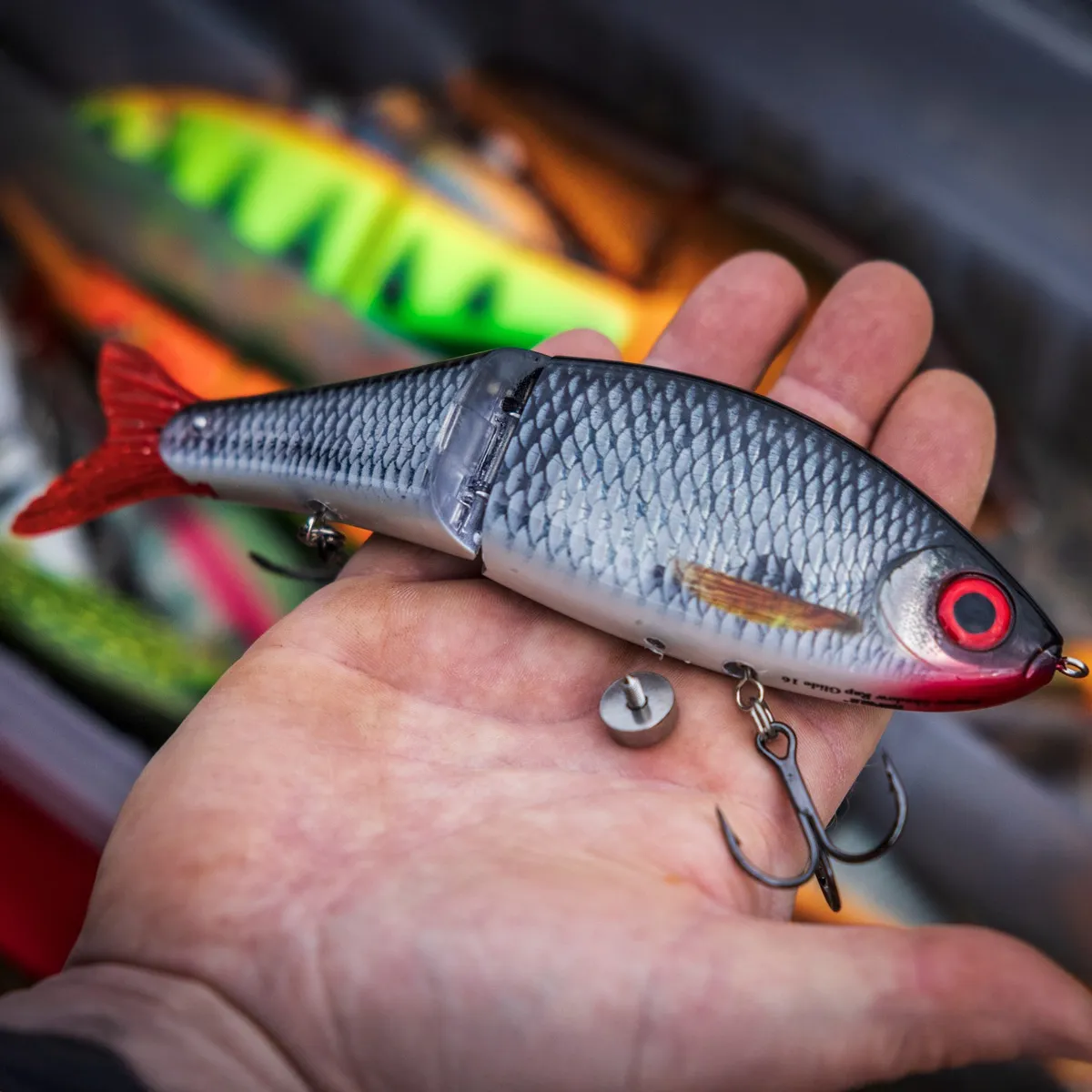
-
Pros: Unique slow-fading action on the pause that triggers strikes; affordable and widely available in proven colors.
-
Cons: May require tuning with different hooks or suspend dots to achieve perfect suspension in varying water temperatures.
2. Jigs (Football & Finesse)
Jigs are a year-round staple, and for that reason, they are included in nearly every discussion about the best bass fishing lures. They become especially dependable in winter because they can be fished with extreme patience along the bottom. They are fantastic imitators of crawfish, a slow-moving, high-protein food source that bass actively seek out in cold water to maximize their energy intake with minimal effort.
Recommended Technique: The most effective winter technique is the "slow drag." Cast the jig out and, once it hits the bottom, use long, slow sweeps of your rod to drag it across the structure, maintaining constant contact. Avoid hopping the jig aggressively. Another key technique is "dead-sticking"-simply letting the jig sit motionless on the bottom for 30 seconds or more, allowing its subtle skirt and trailer to entice a bite.
Recommended Setup:
-
Rod: 7'0" to 7'6" Casting Rod, Medium-Heavy to Heavy Power, Fast Action
-
Reel: Slow Gear Ratio Casting Reel (5.4:1 to 6.3:1)
-
Line: 12-17 lb Fluorocarbon
Our Top Picks:
Strike King Tour Grade Football Jig
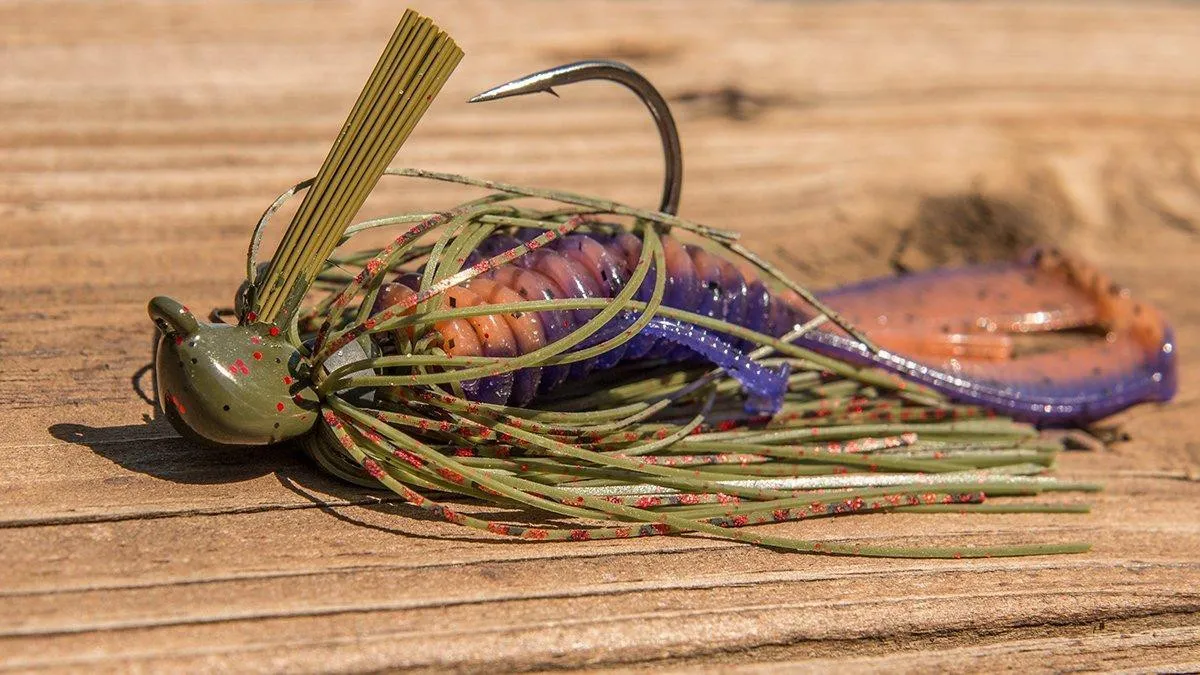
-
Pros: Excellent value, durable construction, features a sharp and reliable Gamakatsu hook, and comes in a wide array of proven color patterns.
-
Cons: The lead head is less dense and therefore less sensitive than tungsten, making it slightly harder to feel subtle bites on soft bottoms.
Keitech Model II Football Jig
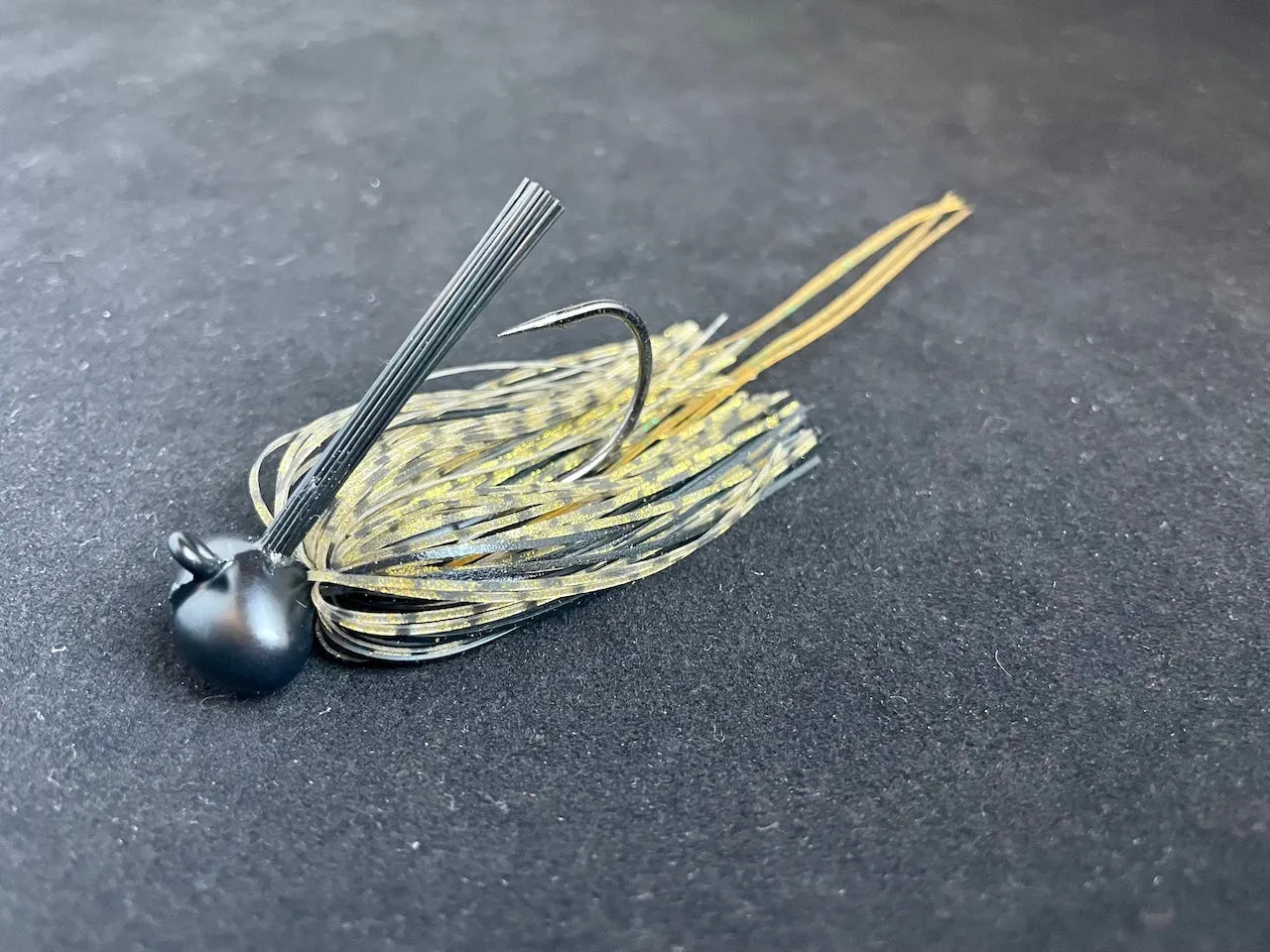
-
Pros: Tungsten head provides superior sensitivity for detecting faint bites and bottom composition; the denser material allows for a more compact profile.
-
Cons: Higher price point than lead jigs; the paint on the head is prone to chipping when fished in heavy rock.
3. Blade Baits & Spoons
When bass stack up in deep water and are unwilling to move-a classic scenario when fishing bass in the winter-blade baits and jigging spoons are the perfect tools to trigger a reaction. These metal lures are not meant to imitate a meal, but rather to create an aggressive disturbance using intense vibration and flash, which provokes a bass to strike out of pure instinct.
Recommended Technique: These lures are best fished vertically. Use your electronics to locate fish, then drop the lure straight down to their level. Use a sharp, 1-to-2-foot upward "rip" of the rod to make the lure vibrate or flash, then immediately let it fall on a semi-slack line. The strike will almost always occur as the lure is fluttering back down.
Recommended Setup:
-
Rod: 6'8" to 7'2" Spinning Rod, Medium-Light to Medium Power, Fast Action
-
Reel: 2500-3000 Size Spinning Reel
-
Line: 6-10 lb Fluorocarbon
Our Top Picks:
Damiki Vault Blade Bait
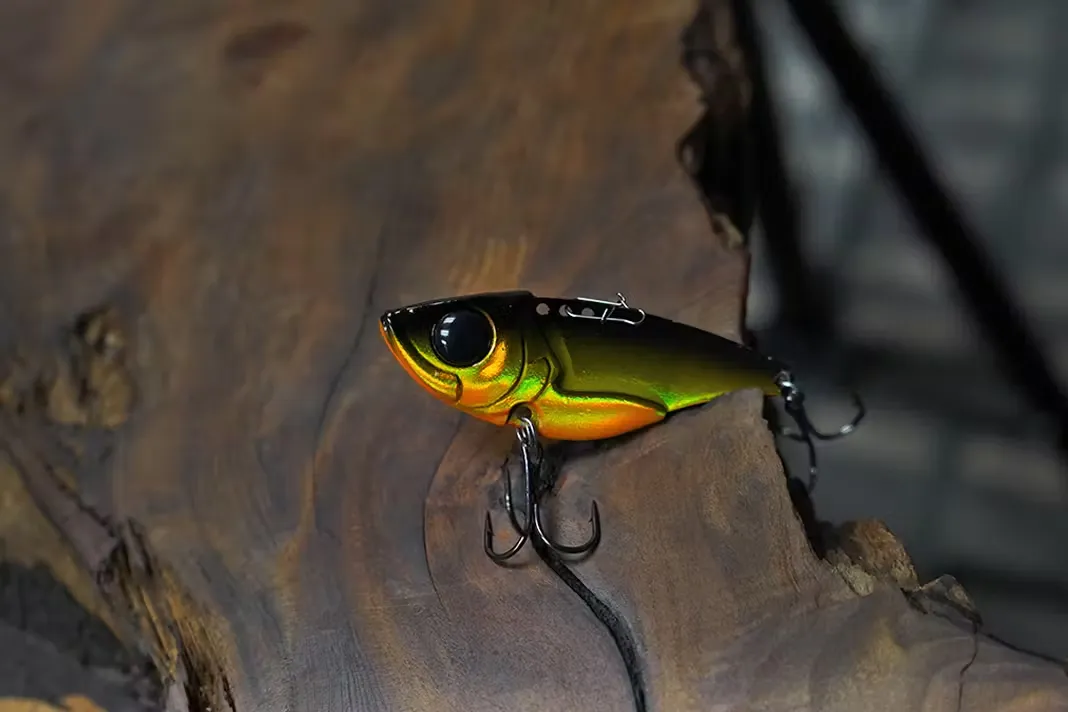
-
Pros: Produces an intense, high-frequency vibration; features multiple line-tie holes to customize the action and vibration level.
-
Cons: Exposed treble hooks are prone to snagging in heavy cover like wood or rock; can be difficult to unhook from a thrashing fish.
Hopkins Shorty Spoon
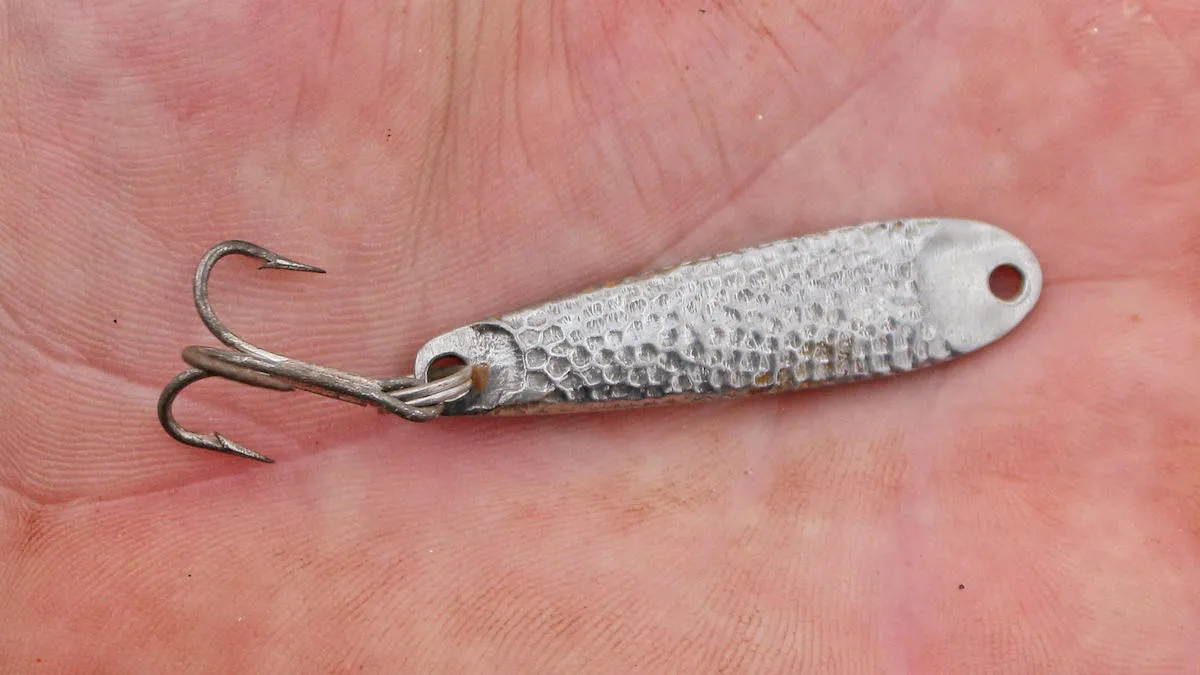
-
Pros: Extremely durable, forged from solid stainless steel; casts a very long distance; simple and proven fish-catching flash and flutter.
-
Cons: Produces significantly less vibration than a blade bait, making its appeal almost entirely visual and potentially less effective in stained water.
4. Finesse Rigs (Ned Rig & Drop Shot)
When the bite is at its absolute toughest and standard presentations fail, the most subtle winter bass fishing lures are finesse rigs. These techniques are designed to present a small, non-threatening, and hyper-realistic offering that even the most lethargic and pressured bass will eat. They are the ultimate "last resort" for generating bites in cold water.
Recommended Technique:
-
Ned Rig: Cast the rig out and let it sink. The best retrieve is almost no retrieve at all. Simply drag it slowly across the bottom, letting the buoyant plastic tail stand up and quiver naturally.
-
Drop Shot: This technique allows you to hold a bait in a specific spot. Keep the weight on the bottom and gently shake your rod tip to give the bait a subtle dancing action without moving it from the strike zone.
Recommended Setup:
-
Rod: 6'10" to 7'4" Spinning Rod, Light to Medium-Light Power, Extra-Fast Action
-
Reel: 2000-2500 Size Spinning Reel
-
Line: 8-10 lb Braided Main Line with a 6-8 lb Fluorocarbon Leader
Our Top Picks:
Z-Man Finesse TRD (for Ned Rig)
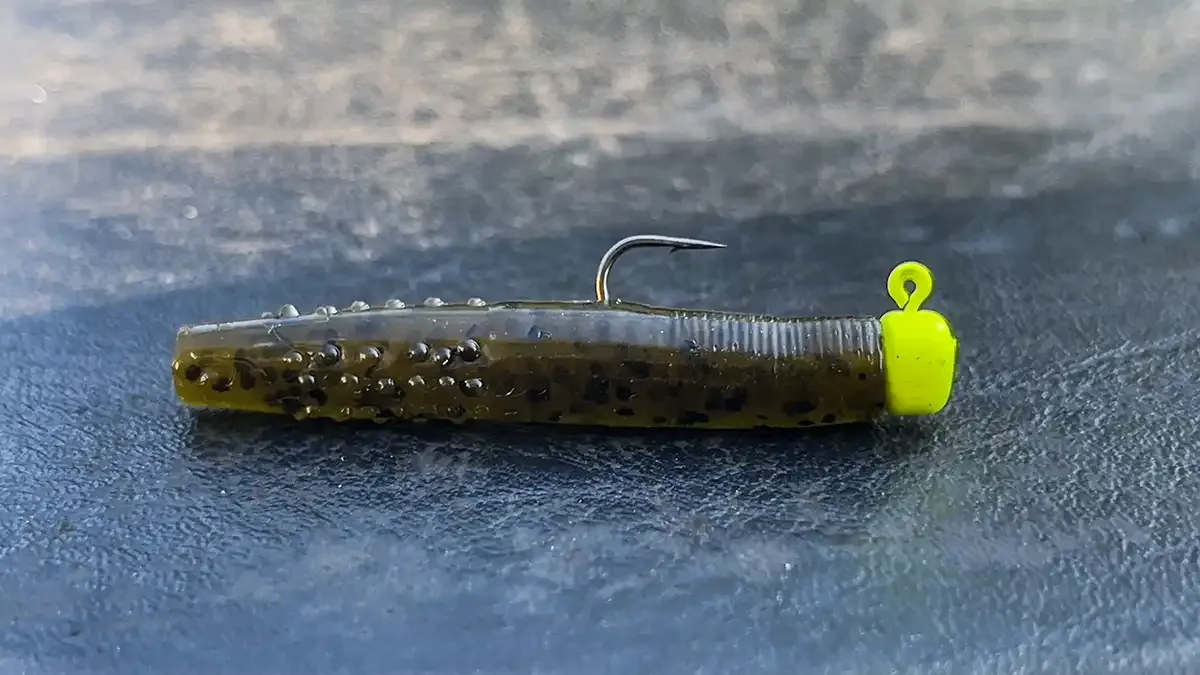
-
Pros: Proprietary Elaztech material is incredibly durable and naturally buoyant, which is the key to the Ned Rig's upright presentation.
-
Cons: Elaztech cannot be stored in contact with other standard soft plastics, as a chemical reaction will cause them to melt.
Roboworm Straight Tail (for Drop Shot)
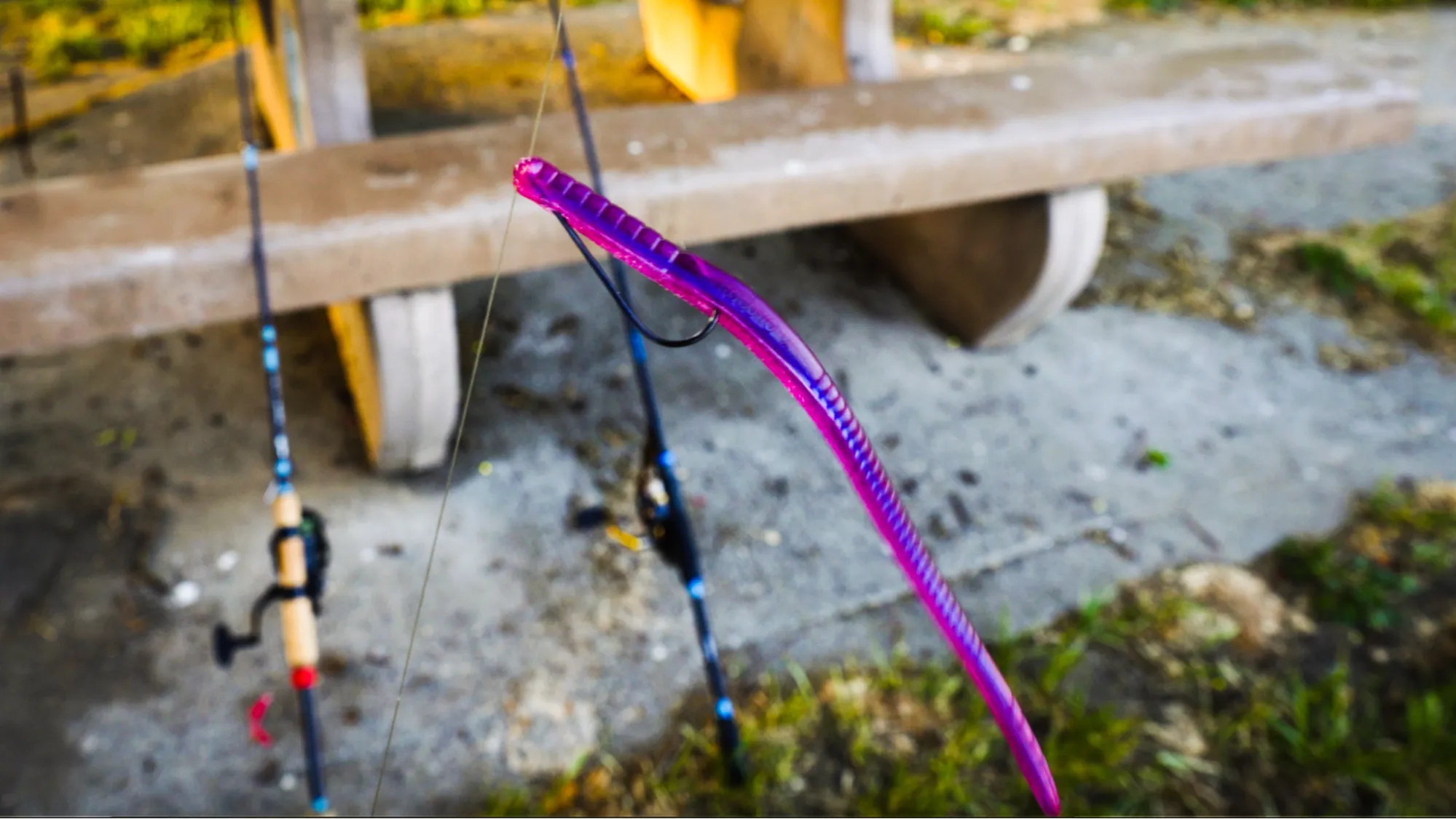
-
Pros: Extremely subtle and lifelike action; hand-poured colors offer hyper-realistic patterns perfect for clear water.
-
Cons: The soft plastic is not very durable and can be easily torn from the hook by smaller fish or after just one or two catches.
5. Lipless Crankbaits
While often seen as an aggressive, warm-water lure, the lipless crankbait can be a surprisingly effective tool for covering water and triggering reaction strikes from winter bass, especially around dying submerged grass. It is a key search bait to include in your box of winter bass fishing lures.
Recommended Technique: Instead of a fast, steady retrieve, employ a "yo-yo" technique. Cast the lure out and let it sink to the top of the grass or near the bottom. Rip the rod upwards to make the bait vibrate intensely, then let it flutter back down on a semi-slack line. This retrieve imitates a panicked or dying baitfish, and the strike almost always occurs on the fall.
Recommended Setup:
-
Rod: 7'0" to 7'6" Casting Rod, Medium-Heavy Power, Moderate-Fast Action
-
Reel: High-Speed Casting Reel (7.1:1 or higher)
-
Line: 12-17 lb Fluorocarbon
Our Top Picks:
Strike King Red Eye Shad
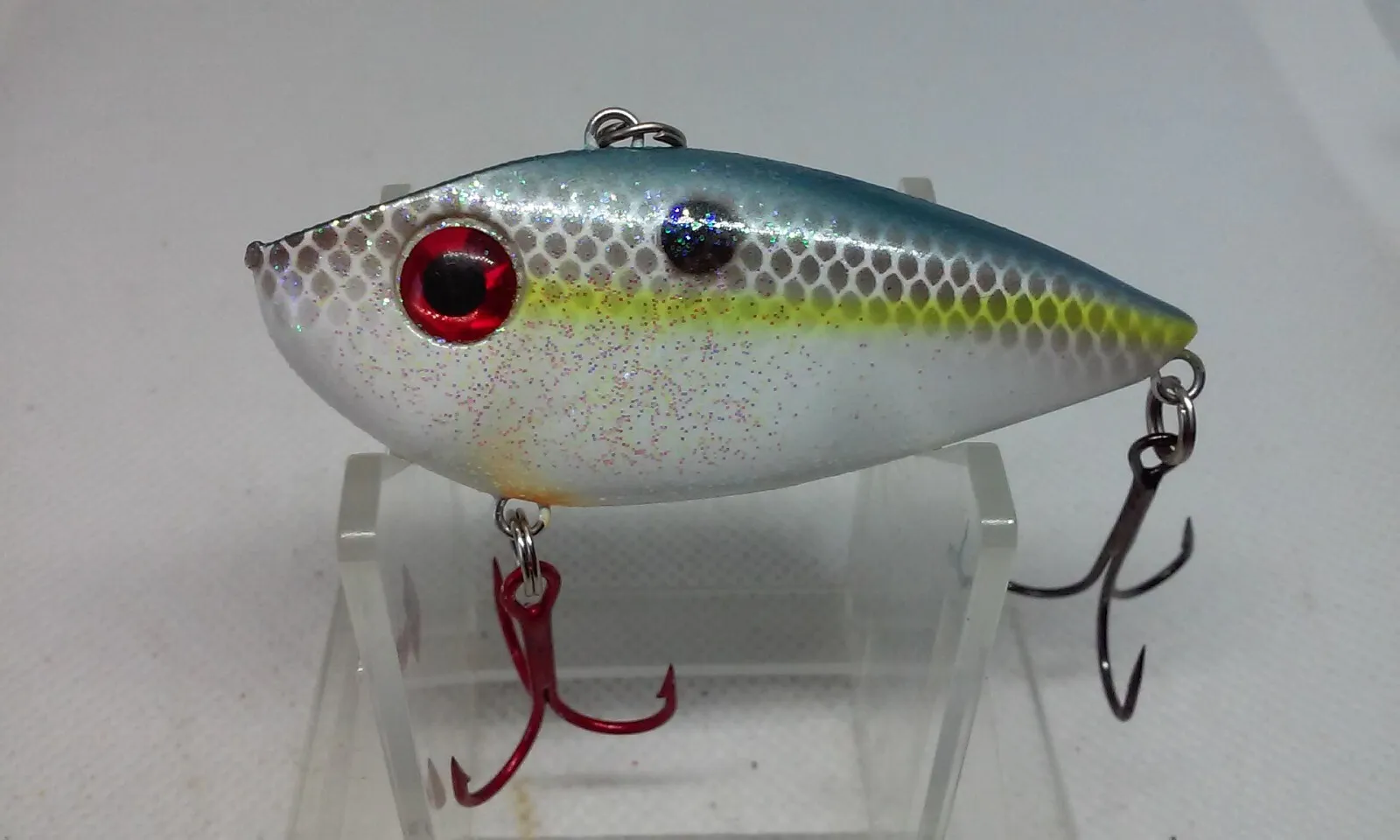
-
Pros: Signature shimmying action as it falls is a unique strike trigger; available in a vast array of colors and sound options (rattling, silent, tungsten).
-
Cons: Like all lipless baits, its two exposed treble hooks are prone to snagging in heavy cover like wood laydowns or dense rock.
Bill Lewis Rat-L-Trap
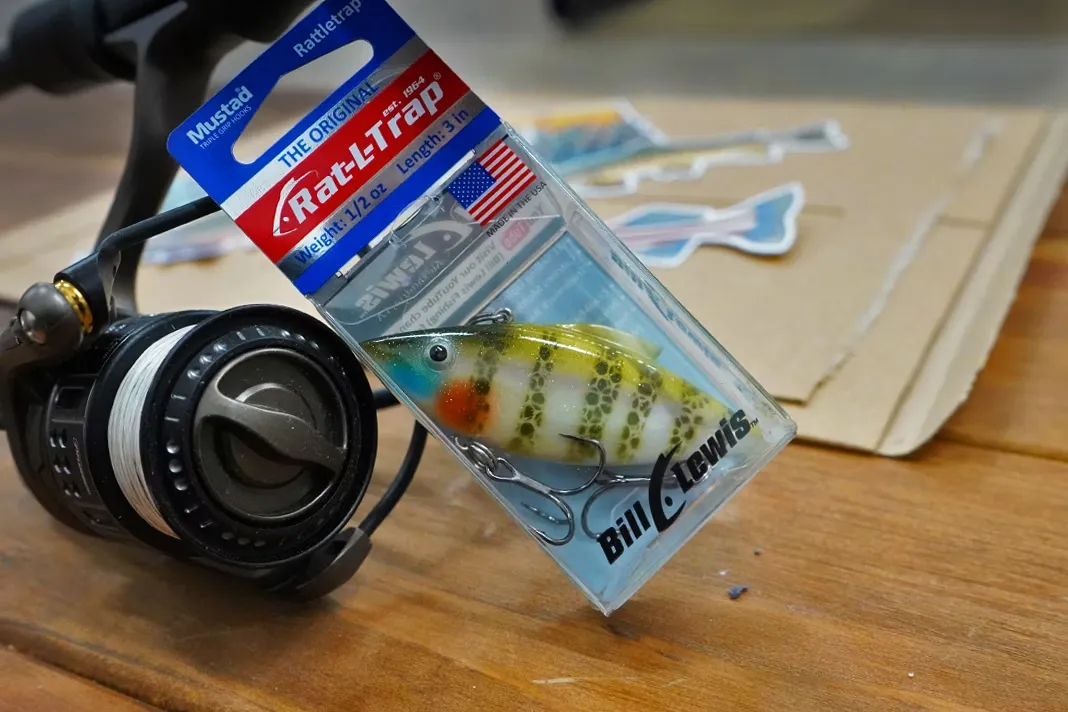
-
Pros: The iconic, high-pitched rattle is a proven fish-attractor; extremely affordable and widely available.
-
Cons: Action is primarily generated on the retrieve; it has a "dead-fall" and lacks the signature shimmy of the Red Eye Shad, making it slightly less effective for the yo-yo technique.
6. Flat-Sided Crankbaits
When the water gets extremely cold, the wide, aggressive wobble of a standard crankbait can seem unnatural. The flat-sided crankbait solves this problem with a tight, subtle action that more accurately mimics a "cold-chilled" baitfish. It offers a finesse approach to reaction baits that is deadly in tough conditions.
Recommended Technique: A slow, steady retrieve is the key. The goal is to make the lure crawl through the water and periodically deflect off of cover like rocks, stumps, or laydowns. This sudden change in direction and pause after deflection is what triggers the majority of strikes.
Recommended Setup:
-
Rod: 6'10" to 7'4" Casting Rod (Composite or Fiberglass is ideal), Medium Power, Moderate Action
-
Reel: Slow Gear Ratio Casting Reel (5.4:1 is perfect)
-
Line: 8-12 lb Fluorocarbon
Our Top Picks:
Rapala Shad Rap
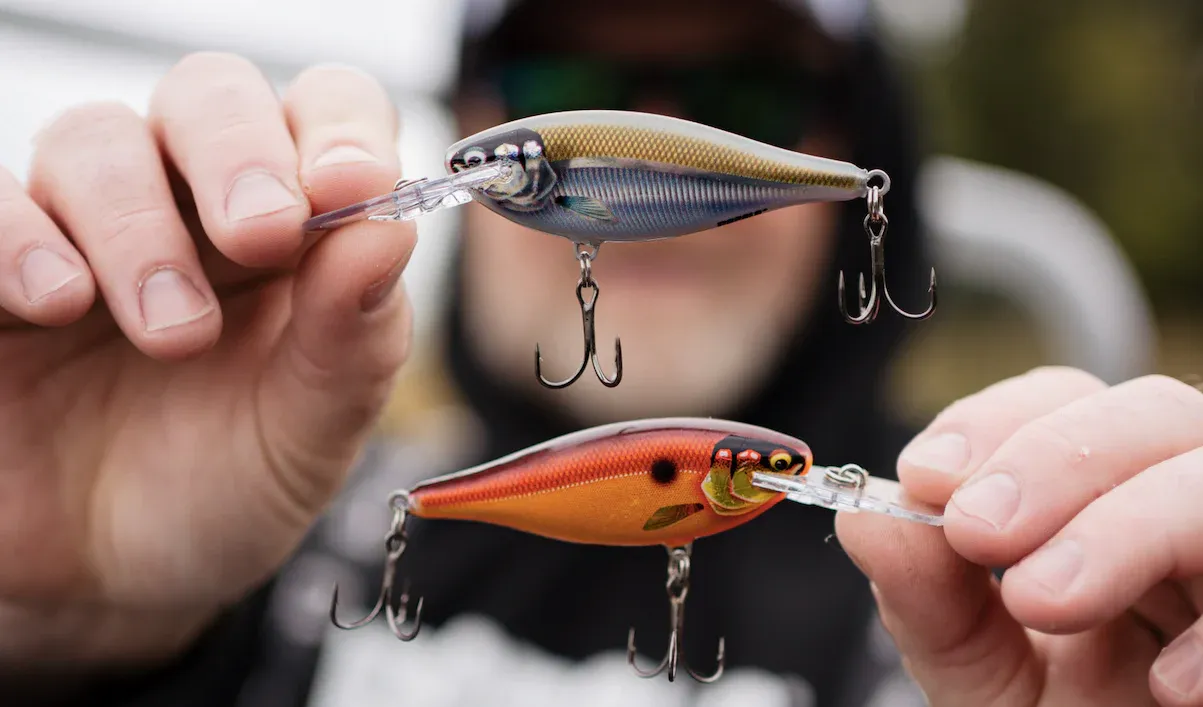
-
Pros: Balsa wood construction provides a uniquely buoyant and lively action that plastic cannot perfectly replicate; a proven fish-catcher for decades.
-
Cons: Balsa is less durable than plastic and can be damaged by rocks; its light weight can be challenging to cast long distances, especially in wind.
SPRO Little John
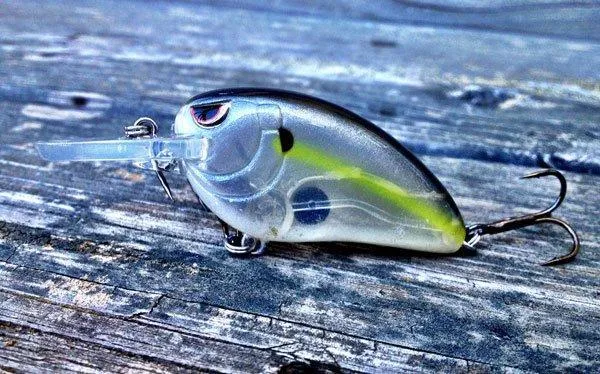
-
Pros: Modern design with a tungsten weight transfer system allows for exceptionally long and accurate casts; more durable than balsa baits.
-
Cons: Its action, while effective, is more mechanical and consistent, lacking some of the unique, natural "wandering" action of a balsa lure.
7. Finesse Swimbaits
Finesse swimbaits are essential for "matching the hatch" in winter, as bass are often feeding on the small, young-of-year baitfish from the previous season. A small, 2.8 to 3.8-inch paddle-tail swimbait perfectly imitates this primary forage and has a subtle action that works at the ultra-slow speeds required for cold water.
Recommended Technique: The "slow-roll" is the most effective retrieve. Cast the swimbait out on a light jig head, let it sink to the desired depth where fish are suspended, and then retrieve it just fast enough for the tail to produce a subtle kicking motion. The key is to keep the retrieve speed as slow as possible while still maintaining the action.
Recommended Setup:
-
Rod: 7'0" to 7'4" Spinning Rod, Medium-Light to Medium Power, Fast Action
-
Reel: 2500-3000 Size Spinning Reel
-
Line: 10-15 lb Braided Main Line with an 8-10 lb Fluorocarbon Leader
Our Top Picks:
Keitech Swing Impact FAT
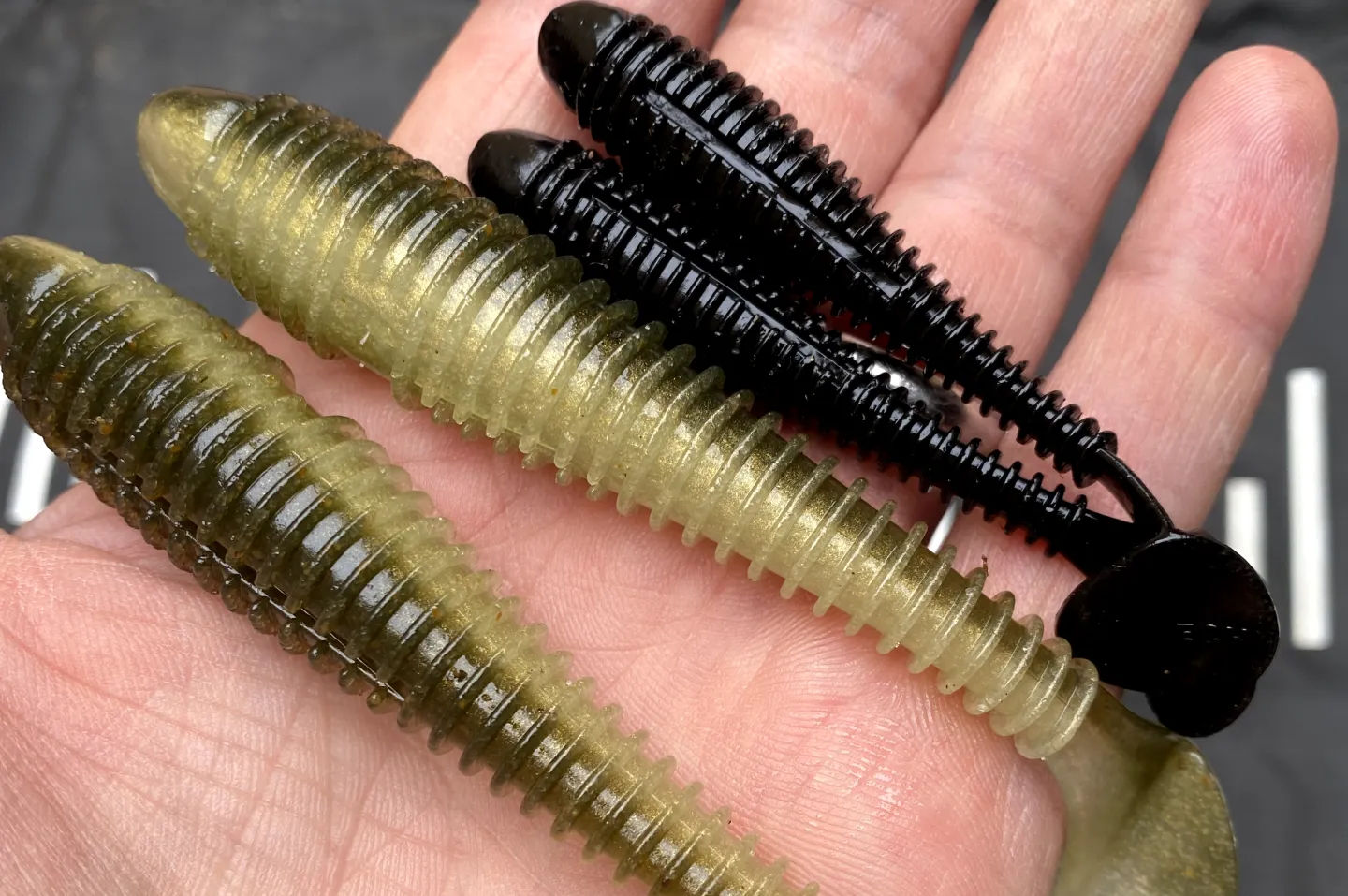
-
Pros: Incredibly soft plastic allows the tail to kick at the slowest possible speeds; infused with a strong squid scent attractant.
-
Cons: The extreme softness makes the bait less durable, often getting torn or damaged after a single fish catch.
Megabass Hazedong Shad
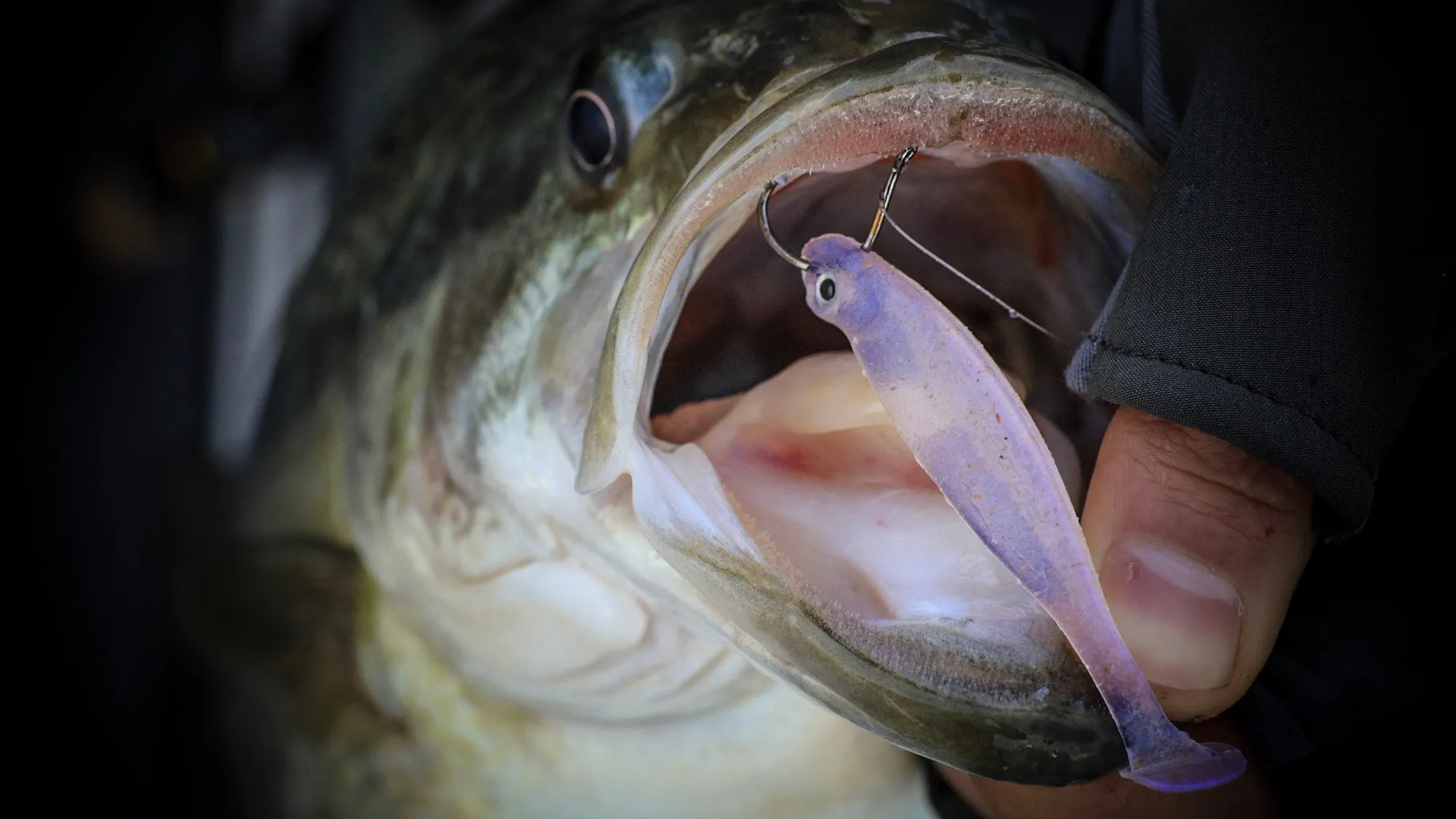
-
Pros: Hyper-realistic profile and detailed color patterns are ideal for clear water; slightly firmer plastic offers better durability than the Keitech.
-
Cons: Premium price point; may require a slightly faster retrieve to initiate the tail-kicking action compared to ultra-soft baits.
8. Hair Jigs
Before the advent of modern soft plastics, the hair jig was the original finesse presentation. Natural hair, like bucktail or marabou, has a unique ability to "breathe" and pulse with the slightest water movement, creating a subtle, living action that is impossible to replicate with plastic and is deadly on highly pressured or inactive bass.
Recommended Technique: Patience and subtlety are paramount. Cast the jig out and let it fall on a semi-slack line, allowing it to glide naturally. Once it's on the bottom, use tiny hops, short drags, or simply let it sit still (dead-stick). The water currents will do most of the work for you.
Recommended Setup:
-
Rod: 7'2" to 7'6" Spinning Rod, Light to Medium-Light Power, Fast Action
-
Reel: 2000-2500 Size Spinning Reel
-
Line: 4-6 lb Fluorocarbon (light line is crucial for the slow, natural fall)
Our Top Picks:
Cumberland Pro Lures Preacher Jig
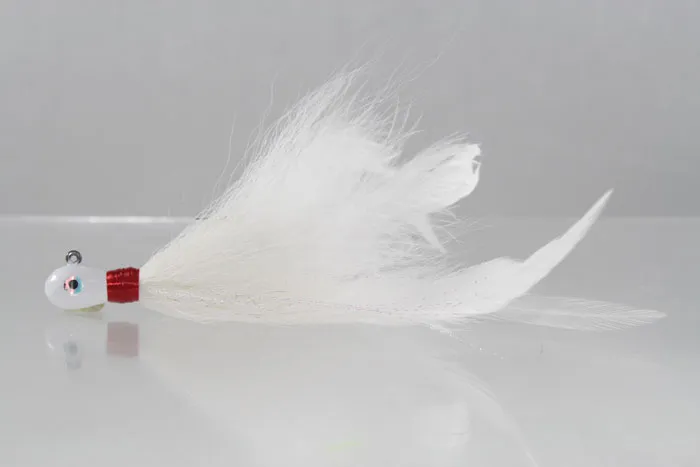
-
Pros: Iconic and proven design that has been catching fish for over 50 years; extremely affordable and simple to use; weight-forward design helps it cast far and sink quickly.
-
Cons: The stock hardware (hook and blade) is basic and may need to be upgraded by serious anglers for better performance.
VMC Dominator Marabou Jig
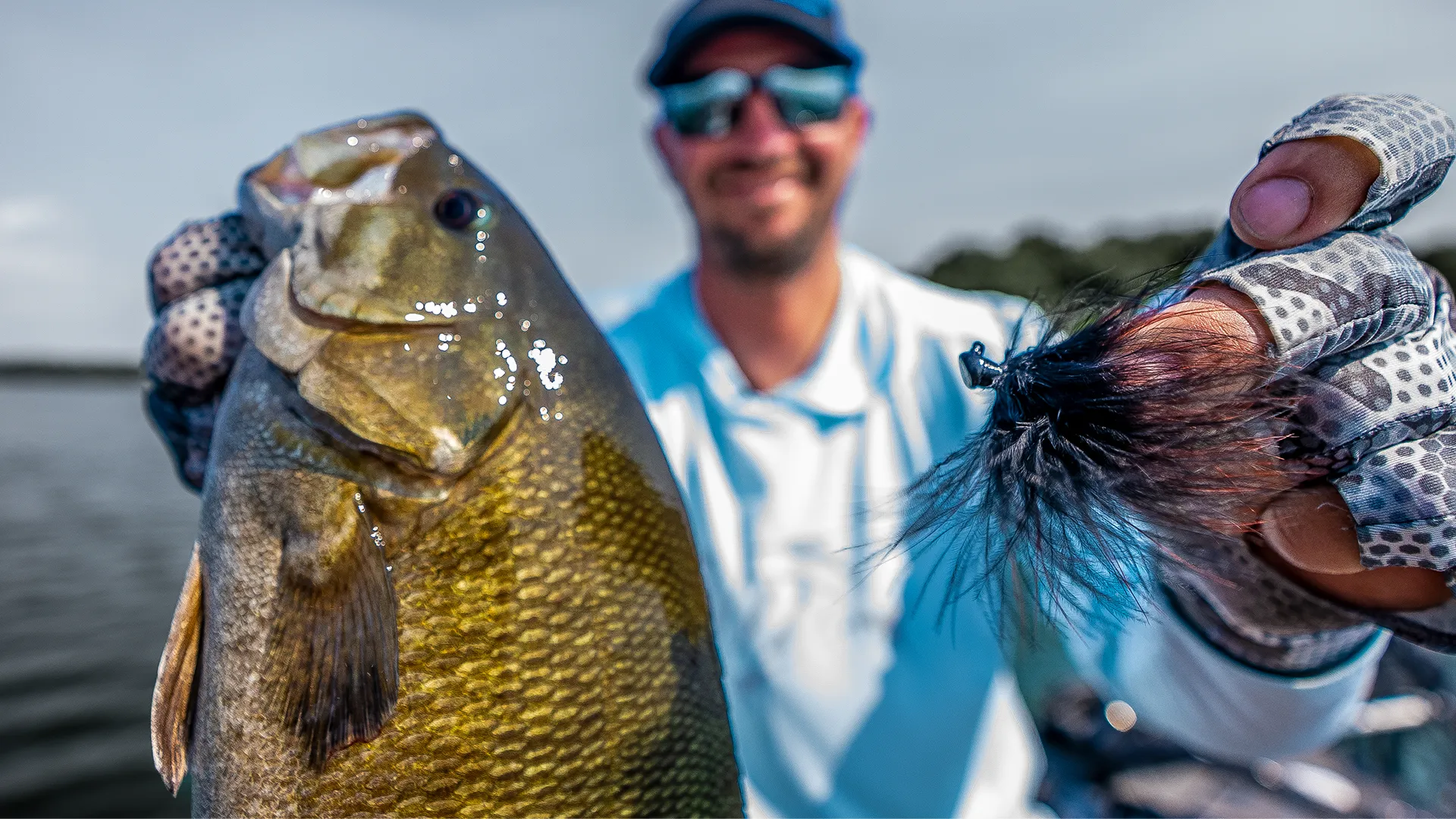
-
Pros: Premium, modern design with high-quality hardware and a more realistic body profile; produces more vibration and has a more stable action on the fall.
-
Cons: Significantly higher price point, making it more painful to lose to a snag on the bottom.
9. Tail Spinners
The tail spinner is a compact, versatile metal bait that offers a finesse alternative to a blade bait or jigging spoon. It combines the weight and profile of a small metal body with the added flash and subtle vibration of a spinning blade on the tail, making it an excellent baitfish imitator for deep or suspended fish.
Recommended Technique: This lure can be fished vertically with short, 1-foot hops off the bottom, much like a blade bait. It's also highly effective when cast out and retrieved with a slow, steady pace (a technique often called "strolling"), allowing the blade to spin consistently as the lure swims back to the boat.
Recommended Setup:
-
Rod: 6'8" to 7'2" Spinning Rod, Medium-Light Power, Fast Action
-
Reel: 2500 Size Spinning Reel
-
Line: 6-8 lb Fluorocarbon
Our Top Picks:
Mann's Little George
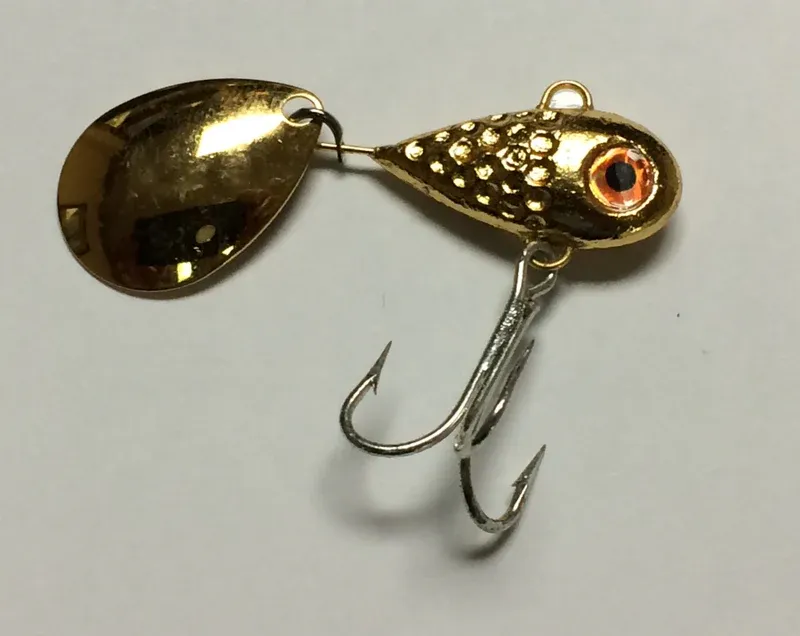
-
Pros: Iconic and proven design that has been catching fish for over 50 years; extremely affordable and simple to use; weight-forward design helps it cast far and sink quickly.
-
Cons: The stock hardware (hook and blade) is basic and may need to be upgraded by serious anglers for better performance.
Jackall Deracoup
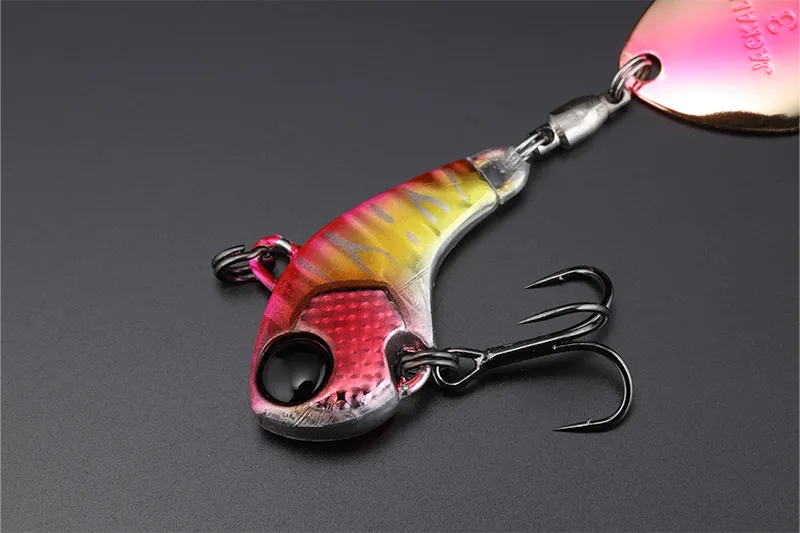
-
Pros: Premium, modern design with high-quality hardware and a more realistic body profile; produces more vibration and has a more stable action on the fall.
-
Cons: Significantly higher price point, making it more painful to lose to a snag on the bottom.
10. The Alabama Rig (Umbrella Rig)
The Alabama Rig, or A-Rig, is a specialized tool and the "nuclear option" for targeting large, suspended bass in the winter. It works by simulating an entire school of baitfish, an overwhelming presentation that triggers the competitive feeding instincts of big bass looking for a substantial meal.
Recommended Technique: The technique is surprisingly simple: a slow, steady retrieve. Cast the rig out (which requires significant effort), count it down to the depth where you're marking suspended fish on your sonar, and then simply reel it back at a slow, steady pace, just fast enough to make the tails of your swimbaits kick.
Recommended Setup:
-
Rod: 7'6" to 8'0"+ Swimbait Rod, Heavy to Extra-Heavy Power, Moderate-Fast Action
-
Reel: Large, powerful Casting Reel (300-400 size)
-
Line: 65-80 lb Braided Line
Our Top Picks:
Yum YUMbrella Flash Mob Jr.
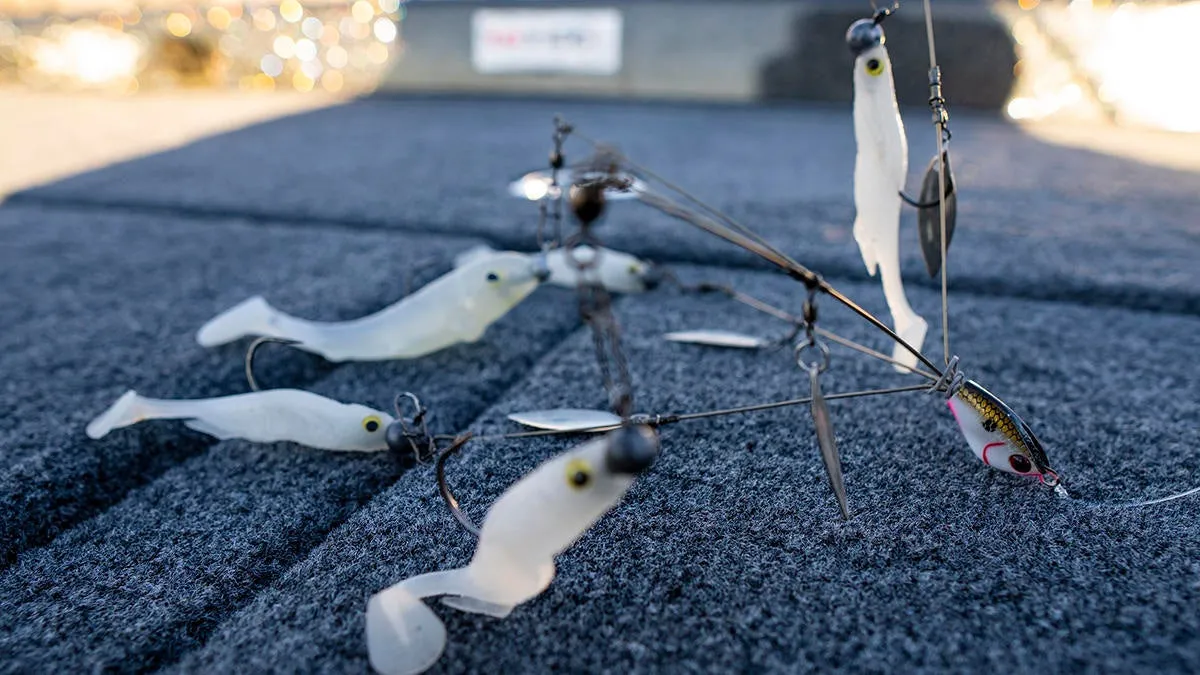
-
Pros: Accessible and affordable entry into A-rig fishing; the "Jr." size is smaller and lighter, making it possible to cast on standard heavy-duty gear.
-
Cons: The wires are less durable than those on premium rigs and may bend or break after catching several large fish or getting snagged.
Hog Farmer Baits BFL Rig
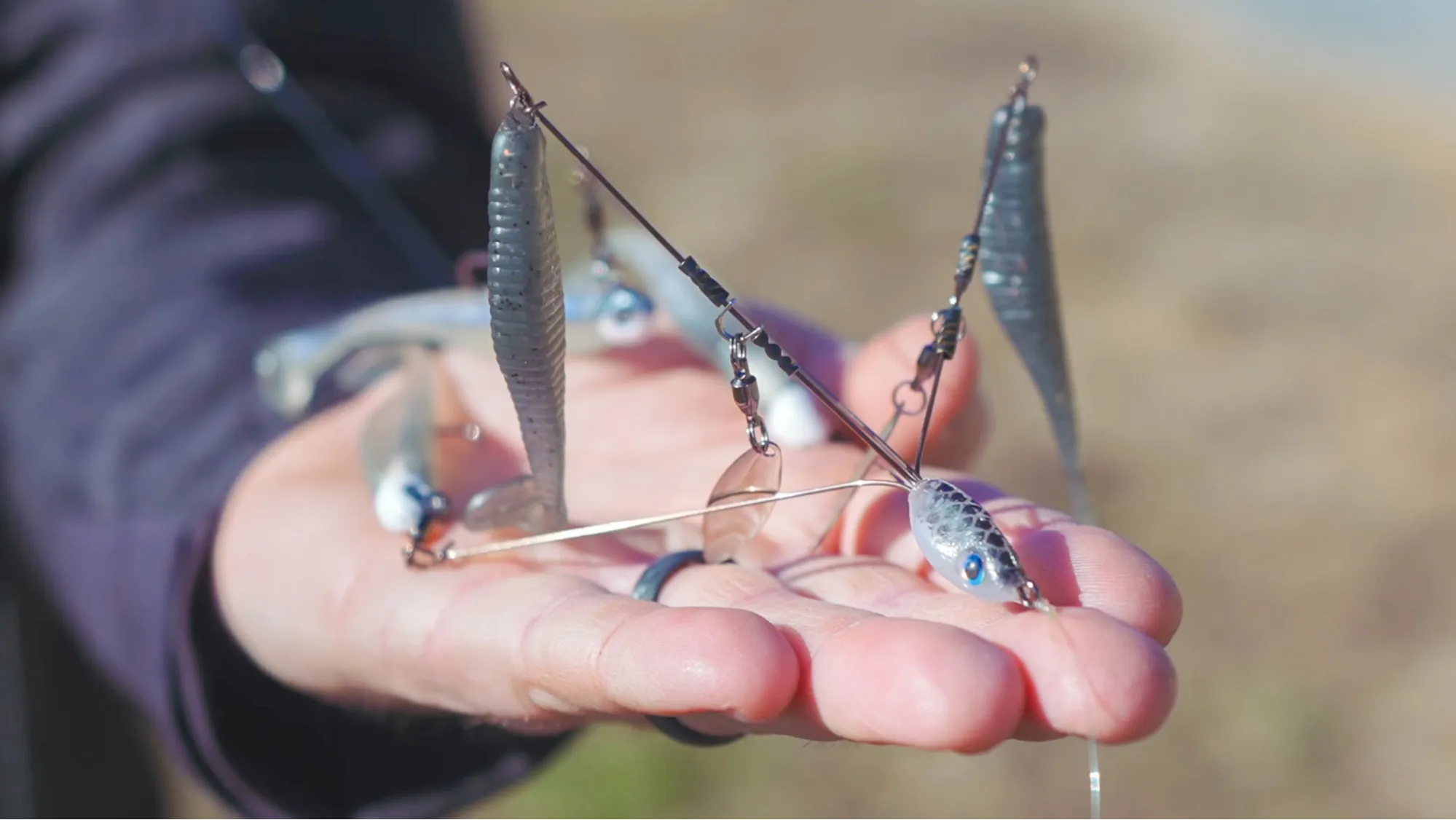
-
Pros: Tournament-grade construction with extreme durability, featuring heavy-gauge wire and premium components designed to land giant fish.
-
Cons: Significantly more expensive and much heavier, absolutely requiring a dedicated, broomstick-like swimbait rod to cast effectively.
Conclusion
Success during the cold-water season isn't about finding one secret lure, but about building a versatile toolbox and having the confidence to adapt. The baits detailed here are more than just pieces of plastic and metal; they are proven solutions for the unique puzzles that winter presents. By mastering this core group of winter bass fishing lures, you transition from merely guessing to strategically reacting to what the fish and conditions dictate. Embrace the challenge, tie on one of these performers with confidence, and you'll discover that some of the most memorable trophies are caught when most anglers are sitting at home.
Aviv Nguyen is a passionate fisherman who loves sharing stories and tips from his fishing adventures. Whether it’s freshwater or sea, he finds joy in every cast and aims to inspire others to enjoy the great outdoors through fishing.
Share This Post With Friends

